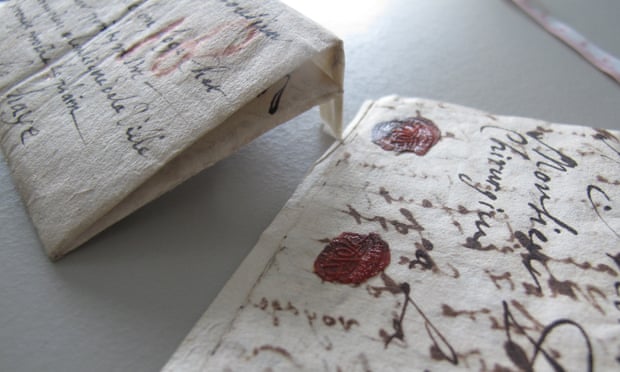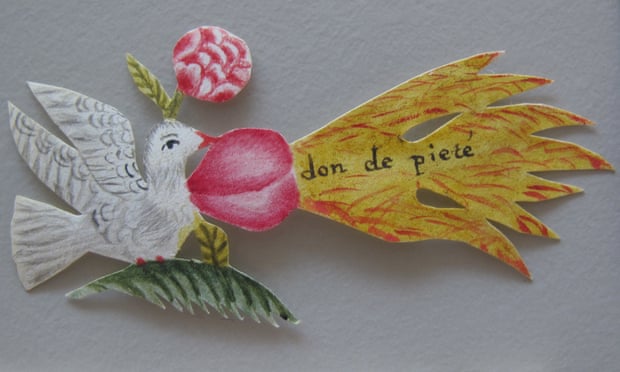Undelivered letters shed light on 17th-century society
by Maev Kennedy

An appeal for help from a desperate woman has been opened and read more than 300 years after the man it was sent to refused to accept delivery – not surprisingly, since the wealthy merchant in The Hague must have suspected it contained the unwelcome news that he was about to become a father.
The letter is part of an extraordinary trove of thousands of pieces of correspondence, never delivered, many still unopened and sealed closed, found packed into a leather trunk and stored away for centuries in the Netherlands.
The collection includes letters from aristocrats, spies, merchants, publishers, actors, musicians, barely literate peasants and highly educated people with beautiful handwriting, and are written in French, Spanish, Italian, Dutch and Latin.
One of the letters that has been transcribed and translated is from a woman writing to a Jewish merchant in The Hague on behalf of “a mutual friend”. The friend was a singer with the Hague opera who had left for Paris, where she discovered the disastrous truth. She needed money from the merchant to return.
“You can divine without difficulty the true cause of her despair. I cannot put it into so many words; what I ought to say to you is so excessive. Content yourself with thinking on it, and returning her to life by procuring her return,” it says.
The letter is marked “niet hebben”, indicating that the man refused to accept it. The fate of the poor singer is unknown. Daniel Starza Smith, of Oxford University, said the man was undoubtedly the father of the child – the true cause of the singer’s departure.

The linen-lined leather trunk, covered in official seals, was presented to a postal museum in The Hague in 1926, but the 2,600 letters it held, 600 of them unopened, are only now being studied by an international team of academics, including scholars from Leiden, Oxford, MIT and Yale.
Special scanning techniques will be used to examine the contents without opening the sealed letters or damaging the ingenious variety of ways in which the pages were folded to so that the letter became its own envelope. The letters were sent between 1680 and 1706, a time of constant war and political upheaval in Europe, and were kept by a married couple, Simon de Brienne and Maria Germain, the postmaster and mistress in The Hague.
They were a canny business couple who spent a period in England as court officials to the newly crowned William III before selling their positions for £1,550 and a barrel of Burgundy and returning home.
At the time the delivery of letters was paid for by the recipient, and many may have been undeliverable because the recipient had changed address – one had been forwarded to a series of different addresses, in vain – or even died. Smith believes that they were kept in the hope that one day they would be collected and paid for.
‘Something about these letters frozen in transit makes you feel like you’ve caught a moment in history off guard,” he said. “Many of the writers and intended recipients of these letters were people who travelled throughout Europe, such as wandering musicians and religious exiles. The trunk preserves letters from many social classes, and women as well as men.
“Most documents that survive from this period record the activities of elites – aristocrats and their bureaucrats, or rich merchants – so these letters will tell us new things about an important section of society in 17th-century Europe. These are the kinds of people whose records frequently don’t survive, so this is a fantastic opportunity to hear new historical voices.”

Many of the letters, he said, even preserved the quality of spoken language of the day, frequently written down without punctuation.
Many of the letters refer to the political turmoil of the time, with reports of highway robbery, religious discrimination and other perils. One man wrote from Nancy, in France, in 1702 warning his musician brother not to attempt to travel via Paris as a fellow musician had been conscripted into the army there. He added the warning: “If you come here, do not bring your instrument or anything else.”
Often the anguish was more personal than political. One woman wrote enclosing a cut-out paper dove holding a flaming heart, bitterly recalling “the fidelity which you promised me and which I have given with all my soul”. Whoever the faithless lover was, he never got the letter.

